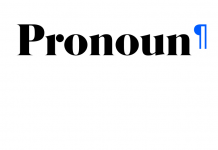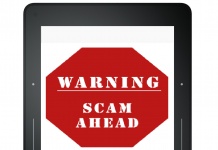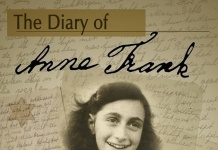 So, who lost the weekend’s ebook war, Amazon or Macmillan? Neither, actually. Amazon gets to raise its prices, make more money and come off looking like the good guy. Macmillan proves yet again that Big Publishing doesn’t get it (did you see even a single mention of book-buying customers in their open letter) and who loses most? The customers—the ones who buy books and upon whose money the whole house of cards actually operates!
So, who lost the weekend’s ebook war, Amazon or Macmillan? Neither, actually. Amazon gets to raise its prices, make more money and come off looking like the good guy. Macmillan proves yet again that Big Publishing doesn’t get it (did you see even a single mention of book-buying customers in their open letter) and who loses most? The customers—the ones who buy books and upon whose money the whole house of cards actually operates!
I have been delighted to find that some readers are starting to fight back. There are alternatives to Big Publishing, if you know where to look and what to look for!1) Public domain and creative commons-licensed books. Manybooks (http://www.manybooks.net), Feedbooks (http://www.feedbooks.com) and Project Gutenberg (http://www.gutenberg.org) are the big repositories here. All allow you to download the book in any format of your choosing, for reading on the device of your choosing. And if you haven’t been to such a site recently, you’ll be gratified to know that the public domain isn’t just Shakespeare and the Bible anymore. You can get pulp sci-fi classics, hundreds of novels from the golden age of mystery (Raymond Chandler just entered the public domain in Life+50 countries) and current titles from contemporary authors like Cory Doctorow, Kelly Link and Charles Stross who have licensed them under Creative Commons licenses.
2) Self-published titles from contemporary authors. Feedbooks (http://www.feedbooks.com) and Smashwords (http://www.smashwords.com) are the main hubs for this. Feedbooks has only free titles and Smashwords has some free titles and some in the $5 and under range—nearly all of these titles allow readers to sample a portion of the book for free. Once you purchase a title, it’s yours to download, DRM-free, in the format or formats of your choosing, without restriction.
3) DRM-free titles from publishers who get it. Baen (http://www.baen.com) is the most noted example, but there are plenty of others who are taking up the cause. A very nice list (http://blog.threepress.org/2009/11/10/list-of-drm-free-publishers/) is available here. Most of these publishers offer a portion of their catalogue for free (as Baen does) or at minimum, sampling capabilities. Fictionwise (http://www.fictionwise.com) carries titles from many of these publishers in their ‘multiformat’ category—you can download these purchases as many times as you need, in whatever format, and they can easily be converted to other formats with software such as Calibre. Among the multiformat offerings are several magazine subscriptions from Dell publications. I currently subscribe to Alfred Hitchcock and Ellery Queen and find them to be very high-quality publications full of excellent stories.
So, how does one start sorting through the massive Internet Slush Pile out there in search of the good stuff? I’ve begun my own small effort here (http://sites.google.com/site/freecheapbooks/home) and encourage others to do the same. Set up a website or a blog and tell us what you’re reading, either public domain or from authors and publishers who get it. We don’t need any more aggregators or big repositories right now. We need personal recommendations of books real readers have read, can vouch for and can recommend to their friends.
Set up a blog or web site, then comment here with the link. I will add it to my burgeoning effort and hopefully we can work together to show publishers that there is money to be made in treating readers the way they should be treated—and real financial peril if they don’t, because today’s e-reader has plenty of choices!


































And for heaven’s sake, let’s stop saying that we are “buying” any book with DRM. We’re not, we’re only renting it.
For example: “Hey, did you see that new Ludlum book?”
“Yes, I rented it on my Kindle just this morning!”
On the business side, Amazon makes out like a bandit *if* margin is all that matters.
They not get to sell books at the same higher price as their opposition yet they have significantly lower operational costs so they are “stuck” with inflated Apple-sized profit margins that they can use to subsidize the hardware price of the Kindles and drive it down to $100 before anybody else.
Things just got way harder for the second-tier ebook retailers and ebook reader vendors built around Adobe’s ePub.
If Amazon wants to, they can easily squeeze Nook out of the market by fall.
Put another way; if Amazon isn’t allowed to discount their ebooks, they sure as heck can discount the readers and flood the market with cheap Kindles.
I think the biggest potential backlash that Macmillan might experience here is the one that has not been discussed in this post. And that is e-book piracy.
Amazon decided to make bestsellers $9.99 for a simple reason, buyer psychology. If you have two essentially identical products, and one costs $9.99 and the other costs $10.01 and test how well those two products sell, you will generally find that the $9.99 version sells a fair bit better than the $10.01 version, despite the latter having a price that is essentially the same. The reason is simple, $10 is one of those psychological thresholds that exist in buyers minds (others are $1, $5, $20, $100… etc). When a price on a product rises above a particular threshold, the amount of thought that goes into buying that product increases far more than the price did and as a result more people will forgo the item.
So, as a result, Amazon and Macmillan will both sell fewer books as a result. Now, doubtless like Felix Torres pointed out, if they are looking at merely the total profits on their books (in the short term) they might do better this way.
The flip side however is that prospective readers of MacMillan e-books will not simply switch to other publishers (cheap or free). Sure some will, but others will still want to read those books that MacMillan is publishing.. they just won’t be willing to pay $14.99 to do so. Some of those people, and who knows how many, will instead turn to the Darknet and download the books for free.
There are some people who will never pay to buy an ebook, regardless of how cheap one makes the price, but each time you increase the prices of books past one of those psychological barriers, you increase the number of people who are willing to download the book from the darknet. And here is the thing, for many of them, once they cross that line, they will never look back, even if prices are lowered later on.
“Amazon gets to raise its prices, make more money… “
Are you sure about that?
Amazon and MacMillan only make money when people actually buy their products. If these “artificially” inflated prices inspire enough people to pass them buy in favor of other offerings the higher margins won’t matter in the face of decreased sales.
Will many folks find MacMillan’s forced inflated price points to be too high for DRM encrusted titles?
We’re about to find out in the coming months.
Readers who are now inclined to piracy probably already download illegal copies anyway, readers who aren’t already so inclined may not be jumping on the piracy bandwagon so quickly, if ever. I may not buy an ebook at $14.99, but I’m not going to steal because I don’t like the price point, I’ll just not get the book.
A bestseller price increase probably won’t affect me. What does affect me though is finding out how little regard publishers (and apparently even some authors) have for their ebook customers. We are buying their products and they see us as an annoying nuisance.
Why can’t Amazon bypass publishers entirely, negotiate directly with the authors, and publish their works as ebooks? They wouldn’t have to incur the usual costs of printing dead-tree books. Nor would they need a network of brick-and-mortar stores, as they already have a distribution system that any publishing house would drool over. The winners would be the consumers, the authors, and, of course, Amazon itself. The big loser would be the publishing industry.
Greg,
Sure some will never turn to downloading illegal copies, but my point is that some will. Remember, we are not necessarily talking about one publisher here, but ultimately all of the big publishers.
The real solution is for popular authors to form a cooperative and sell directly to the public. All you need to publish ebooks are a few editors and a couple of computer geeks to run the website and the servers.
The root of the pricing problem today is that traditional publishers still need to support their business model which includes skyscrapers in New York, printing presses, warehouses and multiple layers of expensive management.
Take a trade paperback that costs $15 in a book store. I would guess the cost breaks down to something roughly like:
Author: $3
Publisher: $5
Printing and Binding: $2
Distribution and Loss: $2
Retailer: $3
============
Total Retail: $15
A 21st Century publishing model could sell the ebook version for something like:
Author: $3
Coop Edit and Publish: $2
Digital Distribution: $1
============
Total Retail: $6
I’m not claiming that these are precise, highly researched numbers. But they give the general idea.
Books, whether print or ebook, are about a transmission of knowledge and perspective between author and reader. The publisher is not the important part of this. But under the old school brick and mortar model the publisher has accumulated huge amounts of money and power and come to believe that he is in control. Hopefully, over the next few years, this will change.
This whole thing has bothered me. As someone who hopes to be an author someday I understand why Amazon’s bully move didn’t sit well. As a consumer of eBooks, I am not happy about the price raise. Typed my thoughts on my blog: (Book Publishing Goes Boom http://tinyurl.com/yhctsh9 & Amazon Slap Down http://tinyurl.com/yl3l5cz)
People are assuming this is about raising prices and that Amazon must be the good guy because the price they’re batting about is lower than Macmillan’s. If you’d read the Macmillan CEOs letter, you’d know it’s more complex than that.
Amazon wants hot new bestsellers to be priced at $9.99 for ebooks from the day of release until who knows when. One result of that will be that popular new books won’t be available as ebooks for months afterward. No publisher, able to sell a hardback to eager fans for a $12 profit, is also going to sell it as an ebook and make only $7. You won’t get these hot new books cheaper. You simply won’t get them at all as ebooks. More accurately, if you can’t wait, you’ll have to pay twice as much for a hardback than you’d pay for a Macmillan-price ebook at $12.95 to $14.95.
Now look at the situation in the long term. Amazon wants that price to stay at $9.99, much like the $0.99 that iTunes once priced all music. That’s cheap they say. It’s easy to remember. And it has a nice ring to it. It’s also their way of shafting customers.
Macmillan, if you read the letter its CEO wrote, wants to be able to cut that price down to $5.95 after six months or so to keep sales up. That makes perfect business sense for them. Once their costs are covered, for an ebook any sale is a profit for them and for the author. Rest assured, they’ll pick a price low enough to keep sales up. They may even do what iPhone developers do from time to time–give it away for a day or two to create a buzz.
The opposite is true of Amazon’s economics. Its costs aren’t upfront and soon written off. They’re fixed and never go away. It is their income that is fixed at 30% and in that’s the hidden dynamics of this dispute. A $9.95 book means about $3 in income for Amazon, while $5.95 book means only $1.78 in income, a substantial 40%. drop. That’s the first clue you should consider. Amazon has at least as much incentive to keep the prices of most books UP at $9.95 as it has to LOWER the prices of some to $9.95. Amazon knows that even if you don’t.
The economics get even clearer if you factor in costs. If you assume for a moment that Amazon’s overhead for serving up each book sold is $1.50, the shift in Amazon’s profit margin as the allegedly evil, price-setting publisher cuts a book’s price is far greater. For books sold at $9.95, Amazon will earn $1.50 profit, 15% of the retail price and a typical margin in business. But for a book sold at $5.95, it will only earn a pitiful $0.28, a drop in their profit margin of over 500% and a profit margin on the retail price of less that 3%. A business making only 3%, given all the other costs of doing business, is a business in big trouble.
I’m not explaining this to paint Amazon as incorrigibly bad or Macmillan as all sweetness and light. I do it to stress that each is playing by a different set of rules. Publishers operate by rules that make them want to start with a high price and go low. Amazon operates by rules that make it want to keep the price in a middle range forever.
Mike: It’ll be nice if they can be trusted to do it.
But they’ve had ten years of selling through other e-vendors such as Fictionwise in which they could have done that if they wanted—but instead they have a track record of e-book versions still selling at hardcover prices months or years after the print version has gone to paperback. I linked some of those in my coverage of the matter.